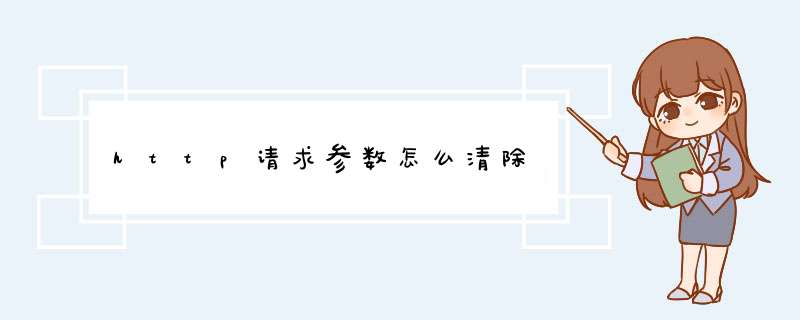
XMLHttpRequest对象的相关属性和方法
XMLHttpRequest的方法:
abort() 停止当前请求
getAllResponseHeaders() 把Http请求的所有响应首部作为键/值对返回
getResponseHeader("header") 返回指定首部的字符串的值
open(String method,String url,boolean asynchron,String username,String password) 建立对服务器的调用,其中method可以用put,get,post,参数即可以使用绝对地址也可以使用相对地址;url是表示建立的请求将要发送到目的地中进行处理;asynchron表示是否异步。
该方法中的5个参数,其中前两个是必须的,后三个是可选的,调用该方法将建立Ajax对服务器的调用,即完成请求的初始化的方法。在调用该方法时,需要指定调用的方法包括GET、POST及PUT,还需要提供调用资源的URL,此外,boolead类型的asynchron用于指定在进行调用时是采用同步方式还是异步方式,默认true,即异步方式。如果参数数值为false,则采用同步方式和服务器进行交互,即进行等待知道服务器返回响应结果为止。最后两个参数用于在进行连接时指定特定的用户名和密码。
send(context) 函数用来向服务器发送请求。可以使用的参数包括DOM对象、字符串等等。
setRequestHeader("header","value") 该方法为HTTP请求中给定的一个首部设置值,其中header表示要设置的首部名称,第二个参数用于指定放在首部中的值。设置header并和请求一起发送,即指定首部设置为所提供的值,注意在设置首部前必须先使用open()方法。
除了上面的相关方法之外,XMLHttpRequest对象还提供了许多属性,相关属性名称及功能如下:
onreadystatechange 每个状态改变是都会触发这个事件处理器,通常会调用一个javascript函数
readState 请求状态 0=未初始化,1=正在加载 ,2=已加载 ,3=交互中,4=完成
responseText 服务器的响应,表示为一个串
responseXML 服务器的响应,表示为xml.这个对象可以解析为一个DOM对象
status 服务器的http状态码(200对应ok,404对应not found, 500 数据库 *** 作错误)
statusText 服务器的http状态码相应文本
其中,onreadystatechange属性是状态改变的事件触发器,每个状态改变时都会触发这个事件触发器,通常在触发后会调用一个JavaScript脚本语言编写的函数。
删除语句的基本结构为
DELETE FROM 表名称 WHERE 列名称 = 值
如果筛选条件多余一列的时候可以使用 AND或OR将条件连接起来
例如有一张Person表,如下图所示
要删除lastName为Willson的则
Delete from Person where lastName='Willson'
执行该语句后,Willson这条记录将会被删除。
拓展资料
一些常用的SQL语句:
SELECT - 从数据库表中获取数据
UPDATE - 更新数据库表中的数据
DELETE - 从数据库表中删除数据
INSERT INTO - 向数据库表中插入数据
CREATE DATABASE - 创建新数据库
ALTER DATABASE - 修改数据库
CREATE TABLE - 创建新表
ALTER TABLE - 变更(改变)数据库表
DROP TABLE - 删除表
CREATE INDEX - 创建索引(搜索键)
DROP INDEX - 删除索引
一般来说,Web服务器默认的只支持Post和Get这两种“只读”的请求方法。但是随着Ajax XMLHttpRequest 和 REST风格应用的深入,我们发现Http 1.1协议还支持如下请求方法(Request Method):
OPTIONS
HEAD
DELETE
PUT
TRACE
CONNECT
Get是最常用的,就是向Web Server发请求“获取”资源;那么Post就是向Web Server“邮寄”一些封装的数据包获取资源,这两者方法严格的说都是“索取”行为。
顾名思义,Delete方法就是通过http请求删除指定的URL上的资源啦,Delete请求一般会返回3种状态码:
200 (OK) - 删除成功,同时返回已经删除的资源
202 (Accepted) - 删除请求已经接受,但没有被立即执行(资源也许已经被转移到了待删除区域)
204 (No Content) - 删除请求已经被执行,但是没有返回资源(也许是请求删除不存在的资源造成的)
Put方法就不多废话了,就是往Web Server上直接扔资源(上传资源)嘛,不过实际 *** 作起来可能会让诸位看官喝一壶,E文定义如下:
The PUT method requests that the enclosed entity be stored under the supplied Request-URI. If the Request-URI refers to an already existing resource, the enclosed entity SHOULD be considered as a modified version of the one residing on the origin server. If the Request-URI does not point to an existing resource, and that URI is capable of being defined as a new resource by the requesting user agent, the origin server can create the resource with that URI. If a new resource is created, the origin server MUST inform the user agent via the 201 (Created) response. If an existing resource is modified, either the 200 (OK) or 204 (No Content) response codes SHOULD be sent to indicate successful completion of the request. If the resource could not be created or modified with the Request-URI, an appropriate error response SHOULD be given that reflects the nature of the problem. The recipient of the entity MUST NOT ignore any Content-* (e.g. Content-Range) headers that it does not understand or implement and MUST return a 501 (Not Implemented) response in such cases.
If the request passes through a cache and the Request-URI identifies one or more currently cached entities, those entries SHOULD be treated as stale. Responses to this method are not cacheable.
The fundamental difference between the POST and PUT requests is reflected in the different meaning of the Request-URI. The URI in a POST request identifies the resource that will handle the enclosed entity. That resource might be a data-accepting process, a gateway to some other protocol, or a separate entity that accepts annotations. In contrast, the URI in a PUT request identifies the entity enclosed with the request -- the user agent knows what URI is intended and the server MUST NOT attempt to apply the request to some other resource. If the server desires that the request be applied to a different URI,
it MUST send a 301 (Moved Permanently) responsethe user agent MAY then make its own decision regarding whether or not to redirect the request.
A single resource MAY be identified by many different URIs. For example, an article might have a URI for identifying "the current version" which is separate from the URI identifying each particular version. In this case, a PUT request on a general URI might result in several other URIs being defined by the origin server.
HTTP/1.1 does not define how a PUT method affects the state of an origin server.
PUT requests MUST obey the message transmission requirements set out in section 8.2.
Unless otherwise specified for a particular entity-header, the entity-headers in the PUT request SHOULD be applied to the resource created or modified by the PUT.
上面说的都是虚的,实战才是硬道理!
(本文始发于CSDN,作者胡奇的博客:http://blog.csdn.net/kthq )
首先,我们要让Web Server支持Delete 和 Put请求方法,以大家熟悉的Tomcat为例:
在Tomcat的web.xml 文件中配置 org.apache.catalina.servlets.DefaultServlet 的初始化参数
[xhtml] view plaincopy
<init-param>
<param-name>readonly</param-name>
<param-value>false</param-value>
</init-param>
readonly参数默认是true,即不允许delete和put *** 作,所以默认的通过XMLHttpRequest对象的put或者delete方法访问就会报告 http 403 forbidden 错误。
接下来,从客户端通过 Ajax XMLHTTPRequest 发起 DELETE/PUT 请求:
欢迎分享,转载请注明来源:内存溢出

 微信扫一扫
微信扫一扫
 支付宝扫一扫
支付宝扫一扫
评论列表(0条)